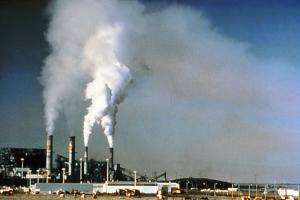Nesting activity for the threatened Loggerhead Sea Turtle on Blackbeard Island in Georgia has increased 22 percent over its 30-year average. Let's hope they survive a wildfire, burning on the island since July 6. Historically, fires are natural and create positive effects, explains Biologist Deb Barnard.
A lightning strike hit in a Wilderness area of the island's National Wildlife Refuge and the resulting wildfire has burned about 117 acres on the island's south end. Changing winds have recently stirred the slow creeping ground fire toward the southeast, not far from a cluster of Loggerhead nests along the beach. There are a total of 205 nest sites on the island.
"At present there is no threat to the turtle nest sites, which are located along the beach," says Terri Jenkins, Incident Commander for the wildfire. "Toward the southeast, we have factors working in our favor." These include a line of dampened swells in the dunes, which form a natural barrier to ground fires. "Either way," Jenkins adds with a smile, "the nest sites are protected by a combination of Mother Nature and old fashioned sweat equity."
The U.S. Fish and Wildlife Service, which manages the Blackbeard Island Refuge, has been monitoring loggerhead nesting activity on the island since 1966. The average nest contains between 100-160 eggs, which have an incubation rate of about fifty days. Because of increased loss of nesting habitat and declining populations, the loggerhead sea turtle was placed on the Threatened Species List in 1978.
"Our mission is to protect the natural processes and resources on this island for future generations," says Refuge Biologist Deb Barnard, "Fire is just as much a natural process as the nesting activity of the loggerhead. Both have been occurring on this island for hundreds of years. Both have positive effects. Our job is to make sure that one doesn't negatively impact the other."










Be the first to comment